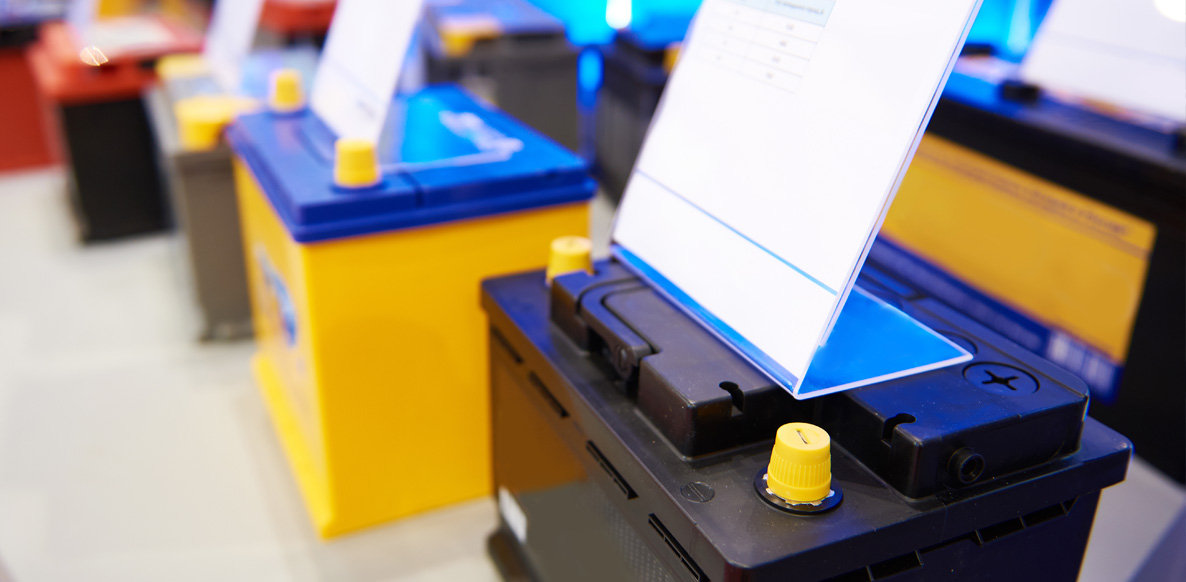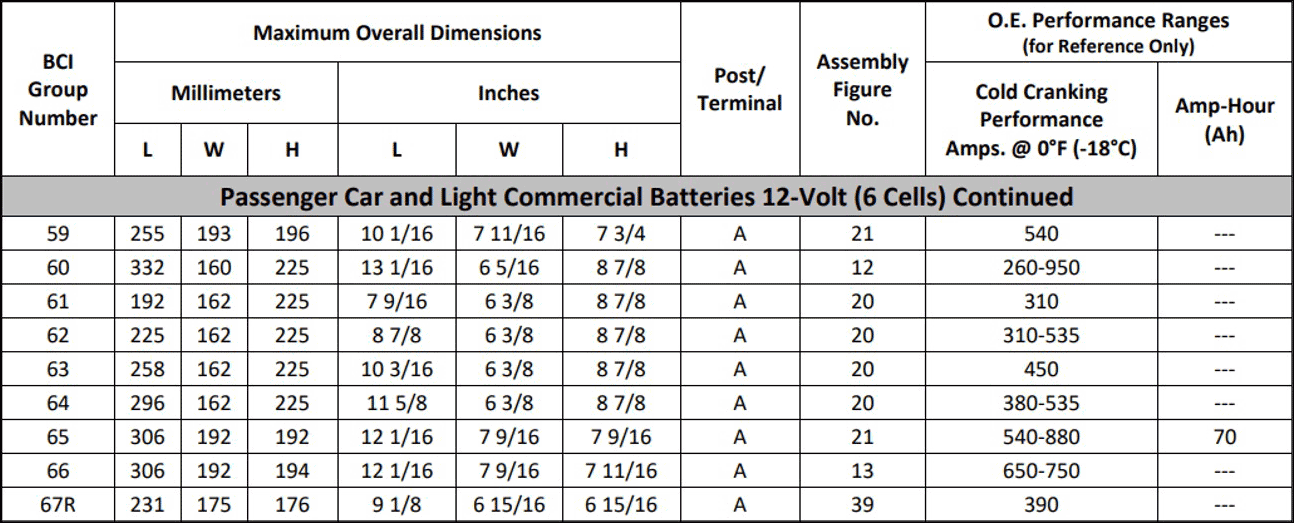What is a BCI Group Size?
BCI Group Sizes are issued to identify the correct battery for automotive applications. Batteries are classified into numbered group sizes according to their voltage, maximum overall dimensions, terminal arrangement, and special features that may affect battery fit.
Given every vehicle’s specific electrical needs, BCI Group Sizes ensure that the replacement battery put in your vehicle is equipped to keep it running like new. BCI Group Sizes cover vehicles across the board including passenger cars, trucks, lawn mowers, ATVs, motorcycles, snow mobiles, jet skis, farm equipment, and industrial equipment.
How are BCI Group Sizes Used?
Companies across the automotive industry use BCI Group Sizes to ensure proper battery fitment for each vehicle. Manufacturers build their batteries to these specifications in order to properly market their batteries to the aftermarket, and work with automakers to create the right battery for each vehicle. Retailers then are able to cross reference the BCI Group Size when replacing a customer’s battery to ensure proper fit and performance.
BCI also issues a comprehensive vehicle replacement database, which assigns the proper BCI Group Sizes to mass market vehicles. The database covers over 160,000 vehicles from over 85 years and is available in a variety of print and digital formats.
What Makes a BCI Group Size?
There are four characteristics that identify a battery as a certain group size. The first is the size of the battery, and more specifically the dimensions. Batteries within a certain group size must be the same physical size (i.e., within 2mm) in order to ensure the proper fitment in a vehicle. The second characteristic is performance, depending on the age of the vehicle, we measure this through cold cranking amps or amp hours. The third characteristic is the position of the terminals, which ensures a vehicle’s electrical cables properly align to the battery. Lastly, batteries are classified into group sizes by chemistry.
By default, the battery is assumed to use lead chemistry with flooded technology. Designations are assigned for higher-performance variants including EFB (enhanced flooded battery) or AGM (absorbed glass mat). Lithium-ion batteries are also noted with a chemistry designation in their group size (i.e., “LFP”). BCI group sizes align with other international battery standards including DIS, EN, and JIS sizes.
…lead batteries [will remain] the dominant technology for SLI, its greatest potential is for renewable energy storage…”




